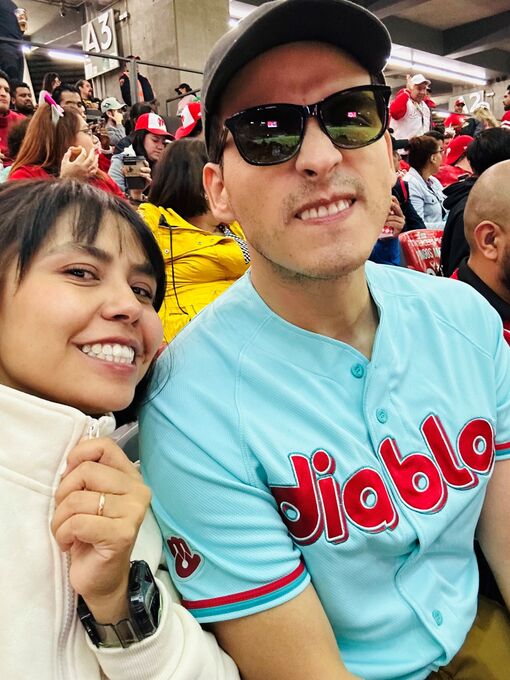
Ariadna & Sergio Eduardo
Ariadna & Sergio Eduardo
What to do?
Los Diablos Rojos’ new stadium is located within the Magdalena Mixhuca sports complex, which was originally built for Mexico City’s 1968 Olympics, and now serves as a public venue for athletic and cultural events.

Museo Nacional de Antropología
The galleries are arranged around a central courtyard, with a roof extending from a massive central column. Water streams continuously downward from the circumference of this column, known as El Paraguas, or the Umbrella.
La Casa Azul (The Blue House) was the place where Frida Kahlo, the most renowned Latin American artist in the world, came into this world, lived, and took her last breath. The building, which dates to 1904, was not a large-scale construction. Today it has an 800 m2 building surrounded by property measuring 1200 m2. Diego and Frida filled it with color, folk art, and pre-Hispanic pieces to show their admiration for the peoples and cultures of Mexico.

It has over 66,000 works from 30 centuries of art including sculptures from Pre-Hispanic Mesoamérica, 19th- and 20th-century Mexican art and an extensive repertoire of works by European old masters and masters of modern western art such as Auguste Rodin, Salvador Dalí, Bartolomé Esteban Murillo and Tintoretto.
Gorgeous historic district, brimming with classic architecture, delicious traditional Mexican cuisine, and even UNESCO world heritage sites.
Many consider this to be one of the best neighborhoods in Mexico City, not only due to its rich heritage but also due to the amount of amazing things to see and do here.
Is one of the largest Mesoamerican sites and features expansive urban causeways and massive pyramids.
In the heart of Mexico’s capital city sits Xochimilco, a borough celebrated for two things: chinampas, floating man-made gardens full of vegetables, fruits, and flowers; and trajineras, multi-hued flat-bottomed watercrafts, which resemble a Venetian rowing boat.
Need more?